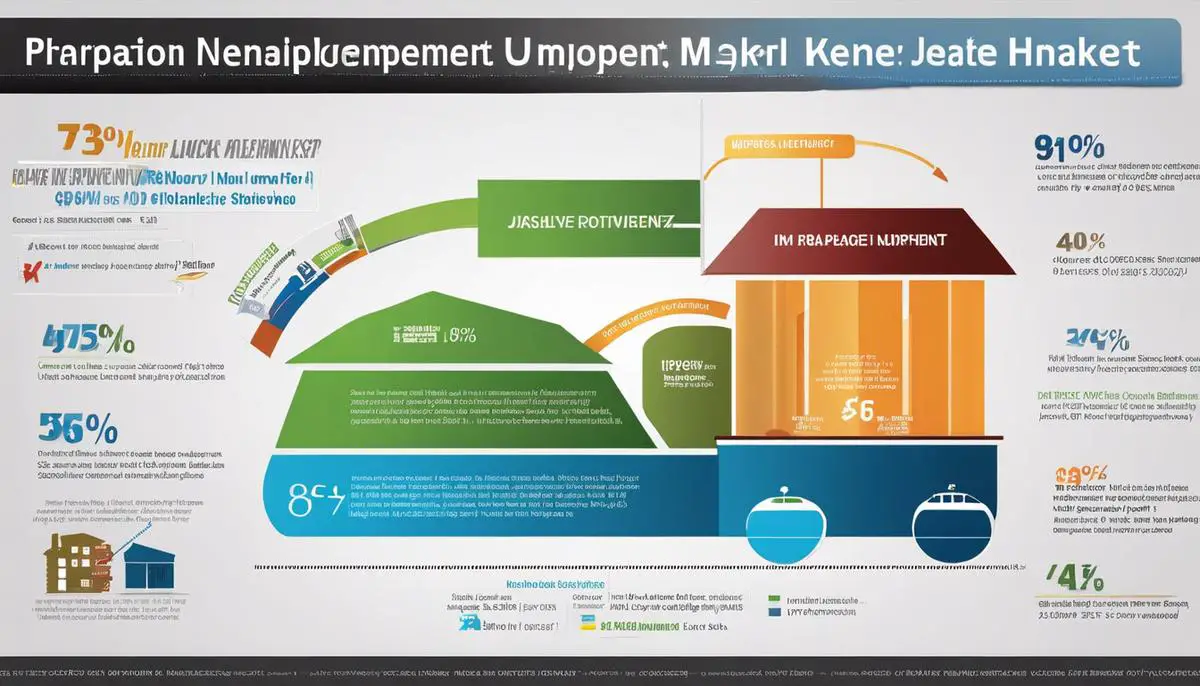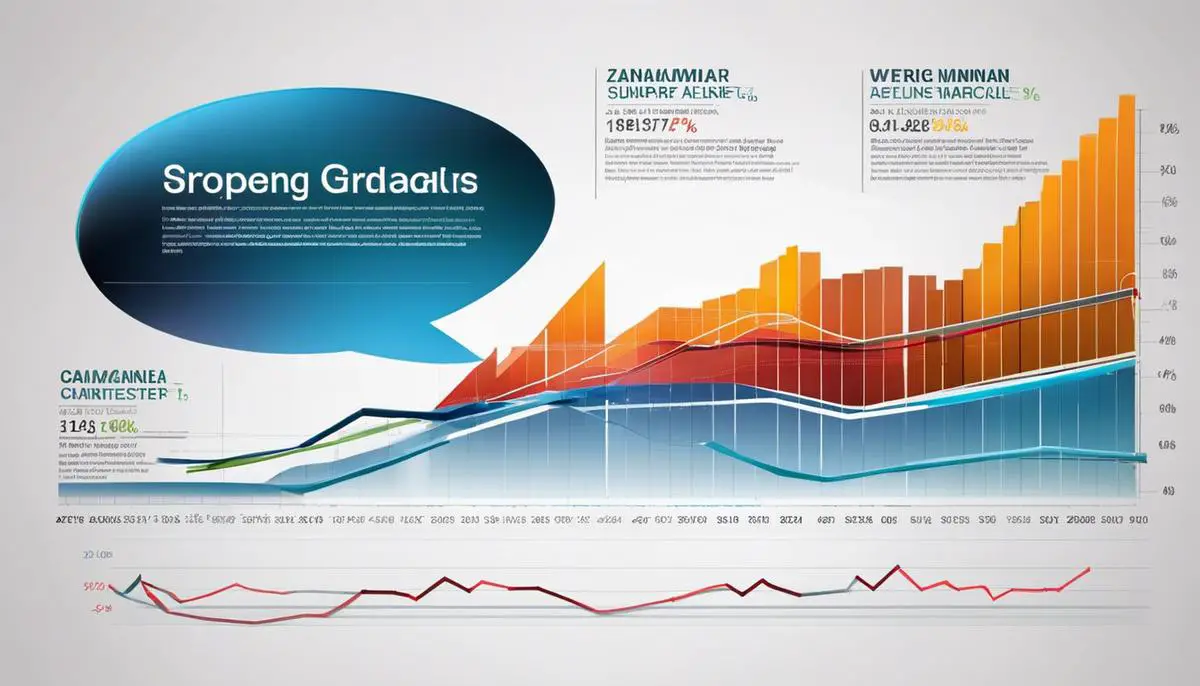As we navigate unprecedented economic conditions, a distinct trend emerges in the financial sphere – individuals are increasingly looking into home refinancing options. The home refinance market is deeply entwined with the economic fabric of our society, influenced by everything from various economic indicators to changing federal policies.
As citizens, understanding this complex sector not only enables us to make informed decisions but also to understand the larger financial picture. In this comprehensive examination, we delve into the heart of the current state of the home refinance market, the macroeconomic factors impacting it, predict future trends, and explore strategic responses for lenders and borrowers alike.
Understanding the Current State of the Home Refinance Market
” Prevailing Trends: Decoding the Home Refinancing Market Now”
In business, understanding prevailing market trends is that magic key which unlocks a treasure of insights. One such goldmine of opportunities is the home refinancing market, which harbors promising potential for forward-thinking investors and homeowners alike. We are here not just to navigate, but to cruise through this excitingly complex labyrinth and gain a deep understanding of the key trends shaping the market today.
First up, low interest rates are ruling the roost. The mortgage marketplace is currently humming with historically low rates. These low rates have reincarnated home refinancing as the money-saving trick up homeowners’ sleeves. The rate at which these mortgages are being refinanced is astounding, and it’s fueling a colossal amount rush in the American housing market.
In tandem with this, there is an influx of technology-enabled refinancing platforms. With an increasing number of sophisticated digital tools and AI-driven platforms, the process of home refinancing is becoming more user-friendly, transparent, and swift. Smart tech is fostering 24/7 accessibility and expediting the entire loan process, quite effortlessly eradicizing the traditional bureaucratic rut and redefining user experience in the mortgage industry.
Thirdly, there’s a strong surge towards cash-out refinancing. As homeowners continue to benefit from escalating home equities, cashing out on home equity during refinancing is becoming increasingly prevalent. Homeowners are leveraging this strategy not only to capitalize on lower interest rates but also to essentially turn their home equity into ready-to-use cash.
Lastly, let’s turn our gaze towards green refinancing – a trend that’s catching fire rapidly. Green is the new gold, they say, and rightly so. Lenders are offering attractive rates for homeowners implementing energy-efficient upgrades. The rise of ‘green mortgages’ is fostering a dual benefit – promoting sustainability while offering financial advantages.
It’s an incredibly dynamic time for the home refinancing market! Low interest rates are kindling a belt of opportunities. Tech-enabled platforms are reshaping the experience of refinancing. Cash-out refinancing is turning home equity into accessible cash, and green refinancing is merging ecology with economy.
The home refinancing market may appear daunting to navigate, but with the grasp of these central trends – it’s a breeze. Knowing where the wind is blowing means stepping ahead of the curve and grasping the right opportunities at the right time. So, whether you’re a homeowner, an investor, or an entrepreneur eyeing this market, it’s time to harness these currents and navigate towards a rewarding horizon.

Impact of Economic Factors on Home Refinancing
Economic Variables: Steering the Course of Home Refinance Market Trends
Interestingly, beyond the glowing temptation of low mortgage rates and the allure of cutting-edge technology platforms, other significant economic phenomena exert a tangible influence on the home refinance market. Two such factors worthy of our attention are inflation and unemployment rates. These variables, though not always front and center, hold substantial power to sway market trends.
Inflation, as a general rise in prices over time, diminishes the value of money. Now, you may wonder, how does it plot the trajectory for the home refinance market? Here’s the appeal – when inflation is on the upswing, the overall cost of borrowing becomes cheaper. Homeowners reading the signs correctly take this as a cue to refinance their mortgages, given that a reduction in purchasing power translates to lower real debt burden.
Under such scenarios, mortgage lenders often present attractive financing terms to home owners. Simply put, in an inflationary environment, lenders eagerly cushion the blow by amplifying refinancing opportunities. However, a key note for lenders – during inflation, it is essential to strike a fine balance. They must offer appealing refinance rates to attract customers without leaning too far into risky territory.
Feeding into this discussion, let’s pivot to another fundamental aspect – unemployment rates. A rise in joblessness is generally not a harbinger of good news for the home refinance market. As unemployment rates climb, the risk of loan defaults increases, which dampens the enthusiasm of lenders to refinance existing loans.
Nevertheless, tough times can ignite innovation and novel strategies. Amid high unemployment, lenders may explore alternative options, such as offering loan modification programs or engaging in short sales to mitigate risk. Such dynamics demonstrate the resilience and durability of the home refinance market, even under challenging economic conditions.
So, while low-interest rates, technology platforms, cash-out surges, and environmentally friendly mortgages have their gems to offer, keep your sights keenly on the economic barometers of inflation and unemployment rates. It’s astonishing how these two facets can mold the contours of the home refinance market, underscoring the importance of comprehensive analysis and savvy decision-making in this space.
In the end, navigating the labyrinth of the home refinance market depends largely on a clear understanding of both the visible and the hidden forces that drive its pulse. So keep a sharp eye on the numbers, anticipate the trends, and make the economic waves work in your favor.

Predicting Future Trends in Home Refinancing
The study of market patterns and financial trends provides valuable insight into the future trajectory of the home refinance market. Several unobservable phenomena and overt mechanisms creep under the surface, shaping the contours of the market landscape. These include factors like regulatory policy shifts, securitization models, and the global economic climate.
Regulatory policy shifts perpetually stir the waters of the home refinance market. For instance, recent stress test rules implemented by the Federal Housing Finance Agency mandates lenders regulated by the body to hold more capital against loans they issue. This regulatory constraint may lead to tighter mortgage underwriting and thus influence the availability of refinance loans. Savvy industry navigators understand the implications of such policies and strategically position themselves to benefit from the resultant market ripple effects.
Next, consider the efficacy of securitization in the mortgage market—particularly how it impacts refinancing options. Financial institutions bundling these loans into mortgage-backed securities allow for the redistribution of risk, which can fuel increased lending activity and availability of refinancing. However, it’s worth noting that a sophisticated understanding of securitization pipelines is necessary to exploit the opportunities therein, given its noted contribution to the 2008 financial meltdown.
Furthermore, global macroeconomic dynamics color the picture of the home refinance landscape. International trade tensions, for instance, have a notable ripple effect on interest rates. As geopolitical uncertainties brew and investors move towards bonds for safety, this can push mortgage rates lower and trigger a refinance boom.
Similarly, the inclinations of foreign investors in U.S. debt markets also play a role, as their actions indirectly impact U.S. mortgage rates. For example, the substantial ownership of U.S. government bonds by countries like China and Japan influences bond yields and consequently mortgage rates—a testament to the interconnectedness of global markets.
Lastly, the rise of non-bank lenders hustling for their market share has also introduced a new dynamic into this highly competitive arena. As these entities attract more customers, traditional banks may be forced to offer more attractive refinance options to retain their clientele.
In conclusion, predicting the future trajectory of the home refinance market based on current trends calls for more than just a cursory examination of the most visible elements. Success hinges on recognizing the less apparent yet influential factors and leveraging them to carve out a profitable path in a shifting terrain. It demands foresight, a deep understanding of systemic machinations, and the entrepreneurial acumen to turn market trends into lucrative opportunities—a thrilling challenge for the agile and informed industry navigator.

Strategic Response to Home Refinance Market Trends
Looking at the current landscape of the home refinance market, several strategic responses stand out for both lenders and borrowers. These strategies go beyond the visible influences and delve into the more complex macroeconomic dynamics, securitization models, and policy shifts, ensuring comprehensive awareness of the market conditions.
At the lenders’ end, maintaining underwriting flexibility is crucial. The recent stress test rules demand lenders to keep a close eye on the quality of underwriting. Capital buffers have to be increased, which means more safety nets are in place, but underwriting flexibility and market competitiveness could be hampered. Therefore, fostering strategic alliances with private equity firms and developing innovative underwriting models that comply with regulations are recommended steps to uphold lenders’ competitiveness.
With the growing role of foreign investors in the U.S. debt markets, lenders also need to be cognizant of how they are influencing mortgage rates. Foreign investors, driven by their home countries’ economic conditions, can either flood or retreat from U.S. debt markets, thereby affecting refinance rates. Developing an insightful understanding of these global inclinations can help lenders forecast rates efficiently and adjust their strategies in the face of volatile international economics.
Borrowers, on the other hand, need to take advantage of the rise of non-bank lenders in the home refinance market. These non-traditional players often offer competitive interest rates and more flexible terms to borrowers. Studying the viability of these non-bank lenders can lead to beneficial refinancing opportunities for borrowers. It’s crucial to understand, however, that while these firms offer more options, they may not have federal backing, thus carrying a different set of risks.
The fluctuating global economic climate invariably impacts local mortgage markets. For lenders, understanding this interplay provides an edge in adapting to changing borrowing cost structures. Borrowers, conversely, must be aware of these larger economic dynamics when considering refinancing, as global risks can affect their capability to fulfill their repayment obligations.
The role of securitization models in shaping refinancing options further underscores the need for strategic positioning by lenders and borrowers alike. By bundling mortgages into securities, lenders can mitigate risks and create a liquid market. Borrowers, in turn, may find more accessible refinancing options due to lenders’ reduced risks courtesy of securitization. As such, being attuned to these models’ intricacies and the associated regulatory landscapes proves essential.
In conclusion, sound strategic responses in the home refinance market need an in-depth understanding of multiple facets. Lenders and borrowers must navigate not just visible market trends but also broader macroeconomic implications, securitization dynamics, policy changes, and the non-traditional lending environment. This multi-dimensional approach ensures stability, competitiveness, and innovation in this ever-adapting marketplace.

While the landscape of the home refinance market continues to shift dynamically, what remains constant is the need for strategic responses from both lenders and borrowers. The prospect of refinancing a home loan does not exist in a vacuum but is intrinsically tied to economic, social, and fiscal elements. By leveraging insights from data, understanding economic context, and foreseeing potential market evolutions, individuals and organizations can position themselves to navigate fluctuations advantageously. The complexity of the home refinance market requires us to constantly educate ourselves, understand changing trends, and align our actions accordingly for optimal financial health.

